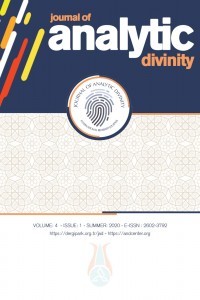
Journal of Analytic Divinity
Yazarlar: Gökçen ÇATLI ÖZEN
Konular:Din Bilimi
Anahtar Kelimeler:Nusayris,Anatolian/Turkish Alewis,Cultural interaction,Cultural difference,National culture
Özet: The Nusayrism was a belief established in Iraq by Muhammad b. Nusayr Nemiri towards the end of the 9th century. Although Nusayrians are bound by Islam, the acquisition of Kitabu’l-Mecmu’u as a written source has differentiated them from other Muslims in the Islamic geography. As being Shiite the Nusayrians, who are cultivated verbally and dependent on the Batin character displaying heterodoxy and a closed society structure, have become the members of a traditional religious group of a fraction hard to be understood. Although the vast majority of the Nusayri population survive in the Arabic region of the Middle East, they have also settled in southern Turkey for centuries. However, there are some differences between the structure of the Nusayri also known as the Arab Alewis in Turkey and the ones in the Arabian geography. These differences which are due to a wide diversity of cultural structures are examined in detail. This article has emphasized that despite the centre-periphery structure, the Nusayris in Turkey agree on the effect of national culture which constitutes the upper culture. This can viewed as a complete success of the nation-state function.